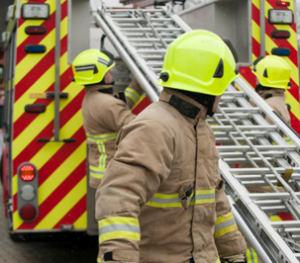Firefighters are turning out after false alarms more often than they tackle a fire, according to Home Office figures.
East Sussex Fire and Rescue Service responded to 9,949 callouts in the year to September, according to the figures.
Of those, 46 per cent were a result of false alarms, while just 18 per cent were for actual fires. And the false alarms included 94 deemed malicious – such as fake or hoax calls.
Fire chiefs said that unnecessary callouts could be costly and time-consuming for the emergency services.
And East Sussex Fire and Rescue, which serves Brighton and Hove, said that it would be changing its response from next month.
The fire service said: “Our service plans to no longer attend fire alarms operating in low-risk commercial premises, between 9am and 5pm Monday to Friday, except bank holidays, unless we receive telephone confirmation that there is a fire.”
For information about the local changes, click here.
While malicious callers accounted for 5,473 calls to fire services across England last year, the biggest proportion of false alarms were the result of faulty equipment such as broken fire alarms and smoke detectors.
In East Sussex, 3,280 callouts were made for this reason, accounting for a third of all incidents attended by the area’s firefighters last year.
A further 1,092 false alarm calls were made in good faith when the caller believed that there genuinely was a fire.
The National Fire Chiefs Council (NFCC) said that firefighters were attending a false alarm almost every 90 seconds in the UK.
And it was costing up to £450 a time, taking crews and equipment away from genuine emergencies and increasing the fire service’s carbon footprint.
Paul McCourt, who leads on tackling unwanted fire alarms at the NFCC, said that while a “considerable reduction has been seen in recent years … more needs to be done to limit the impact these false alarms have”.
He said that owners of commercial properties, which were to blame for many false alarms, had a “wider social responsibility” to deal with them.
Mr McCourt said: “By ensuring correct and compliant alarm design and maintenance, they can help reduce the number of unwanted fire signals.”
Some fire services charge if they are repeatedly called out for false alarms — even when the result of equipment failure — with bills for the worst offenders running into hundreds of pounds.
The number of callouts for East Sussex Fire and Rescue Service fell 2 per cent in the year to last September, compared with 10,116 in the year to September 2020.
Across England, fire services also saw a drop in the number of incidents they attended. There were 537,039 callouts in the 12 months to September 2021, down from 539,418 in the previous year.
Andy Dark, assistant general secretary at the Fire Brigades Union, said that fire services need better funding to handle false callouts.
He said: “It is vital that fire and rescue services have enough resources to deal with all callouts – even where later down the line it is found that it was a false alarm.”
Mr Dark added that cuts to staff numbers and equipment since 2010, increasing response times and fewer crews being sent to fires have made dealing with genuine fires more difficult.
The Home Office said that the government had ensured that fire services had “the appropriate resources and funding to do the job”.








